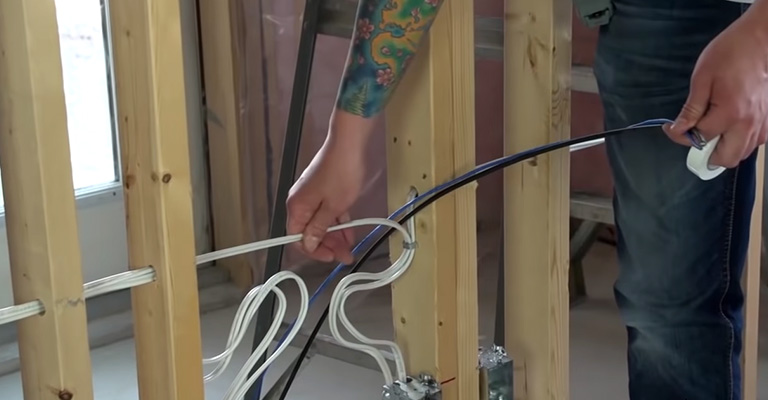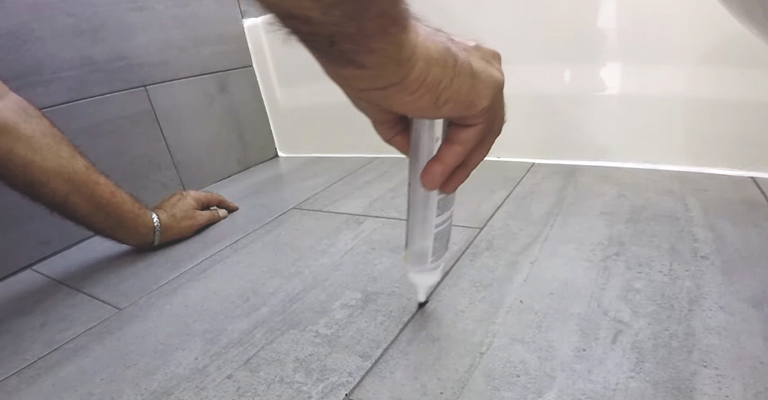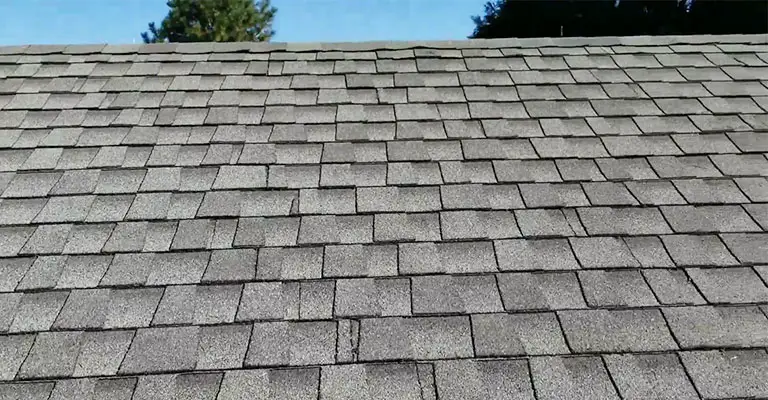Door Latch Won’t Retract | How to Fix?
Check if the latch is jammed or the retracting system is broken. If the plates aren’t in place, one or two simple blows of a hammer may work out the problem. If not, try out making the latching hole bigger. Otherwise, a whole new alignment setup is to be taken at hand.
Door Latch Won’t Retract Completely – Causes and Fix
The door latch problem can often be difficult and annoying. And if it happens with your main door then it can be worrying too. There are several reasons a door latch won’t retract or lock on. You have to find out yourself what your door’s problem is then act accordingly.
Misaligned Strike Plate
This is the most common problem people face with their door. It happens because the wooden frame of the door stretches over time. Thus creating a misalignment.
When the strike plate gets misaligned, the door’s latch doesn’t go inside the hole properly. So, it doesn’t close properly and gets opened if you use a little force. Since it is an alignment problem, you have to align it properly to get rid of this problem.
But the alignment adjustment a few solutions. You should try all of them respectively as listed here since it will be more complicated as you progress through the fixes. The first one is easy, 2nd one is a little difficult, and the 3rd one you may want to call for an expert.
First Solution | Hammer Using a Screwdriver
The first one is easy. It is not guaranteed that it will always work, but it is better to try and if it works then you are done within a few minutes. So it is worth a try.
To do it, take a big flathead screwdriver. Place it inside the hole and hammer it a few times to stretch the hole in the direction you want. Now try to lock the door. If it locks then great, if not then move on to the next solution.
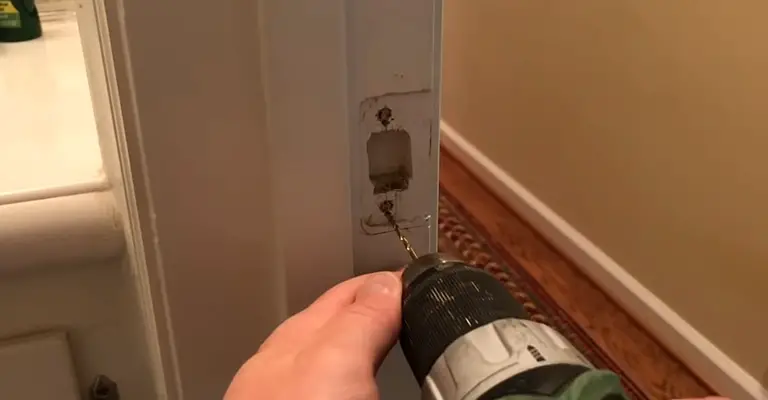
The second Solution | Make a Bigger Hole
For this one, you will need a metal file. You can buy a file from amazon for this purpose. Once you have the file, take a screwdriver and take out the strike plate from the door frame. Now, use the file to brush off the metal from the strike plate on one side. Make sure you don’t reach the screw hole but make the hole-region of the strike plate bigger where the latch will go in.
Then put it back onto the door frame and test it out. Make sure you brush off any extra wood with a chisel when you made the hole bigger. Unless you brush off the wood, the latch will not go inside the hole because the wood is blocking the access.
This works for the most alignment issue. But if you do not want to make the hole bigger or this doesn’t help with your problem, then you can try the 3rd solution.
Third Solution| New Setup
Now that the other two didn’t work, the only option is to take the strike plate off and make two new screw holes to adjust it with the latch. For this, you will need a chisel, a drill along with the other pieces of stuff likes the screwdriver and drill bits. Also, to clog up the old holes, we will need some toothpicks.
Marking New Alignment Lines
First, take out the strike plate from the door frame. Now close the door and mark the new location of the latch with a pencil. This is where the hole of the strike plate will go. Place the strike plate on the mark and use the pencil to mark out the new location for the screw holes.
Filling Up Old Screw Holes
Now, since the old screw holes are still there we have to fill it out. To do that take 2 or 3 toothpicks and use superglue on them. Now push them inside the old screw hole and wait about 10 minutes to dry.
Now use a sharp blade to make some cut on the toothpicks and bend it to remove extra parts from it. This should finish up filling the holes. Since it will get under the strike plate anyway, you don’t need to color it to match with the door.
Setting Up Newly Aligned Strike Plate
Now that the old holes are filled, time to make some new screw holes. To do that, use the drill and use your smallest drill bit to drill out the previously marked screw hole locations.
Then gradually increase the size of the drill bit until you reach your desired size. The reason for doing this is, if you use a bigger drill bit from the start, it can crack your door frame.
After making the holes, put in the screws to test it out. Now take out the screw and place the strike place on the door frame and screw it tightly. Now, the extra wood that is blocking the strike plate hole, can be shaved off with a chisel while the strike plate is on the door frame.
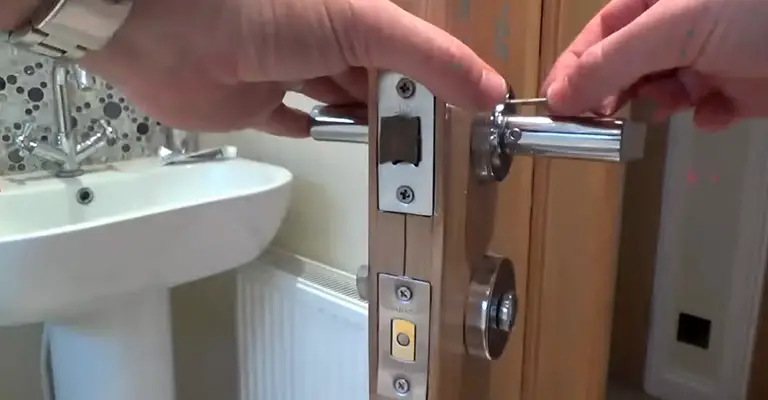
The Latch is Jammed
Sometimes, the latch doesn’t want to retract or just retract partially. If this happens to your door latch then your door lock needs a thorough cleaning. Every door lock is a little different. So it is hard to tell specifically what to do to get it off the door but the cleaning process is more or less the same.
Jammed latched is a result of corrosion inside the lock. Over time, the moisture of the air makes the metal inside the lock rust. These rusts get stuck in the locking mechanism thus jamming them.
To get rid of these rusts, take the lock and latch out from the door and put it inside a 5% vinegar acidic solution for a day. This will make the rusts fall off the metal. Now for a better long-lasting solution, you can polish everything before putting it back and it will unjam your door.
The Mechanism is Broken
Many things can happen if the mechanism is broken. But some of the common ones are the handle or knob doesn’t work or they become very loose. As a result, the lock doesn’t function properly.
If this happens with your door you should just get a new lock. Trying to fix a broken lock will cost more money and time than buying a new one. So it is better to just get a new one.
This is also an opportunity for you to upgrade your security so choose carefully what lock you want to get.
FAQs
Q: How do you adjust a backset on a latch?
Ans: There is a button on the back of the lock that is used for the adjustment. When adjusting, make sure that when it is in the lock position, it cannot be pushed back inside by hand.
Q: How do you adjust a deadbolt latch?
Ans: You can follow our misalignment guide above to adjust the deadbolt latch.
Conclusion
Dealing with a jammed door latch doesn’t have to be a daunting task. With a basic understanding of the door knob’s internal mechanism, including the spring bolt and the cylinder or lock body, you can resolve most stuck door latch situations swiftly. Understanding the common causes, such as a sticky latch or an improperly aligned strike hole plate, can save you from the inconvenience of a closed door that just won’t budge.
The above steps have made it clear that door latches are not as complex as they may appear. With a little patience, even those least familiar with DIY projects can fix a door lock completely and restore easy access to any room. So, the next time you encounter a door latch issue, don’t be quick to call a locksmith. Instead, refer back to these tips and put your newfound knowledge to work.
Remember, the key to fixing any jammed door latch lies in accurately diagnosing the issue first. Whether it’s due to a misaligned strike hole plate or an issue within the lock body, a thorough check will always point you in the right direction. Fixing a sticky door latch might just be a few steps away, bringing a swift resolution to the dreaded closed door problem.


